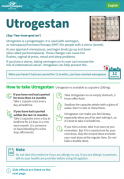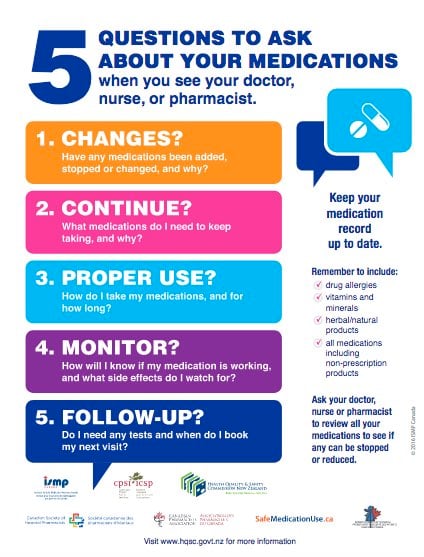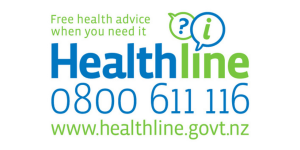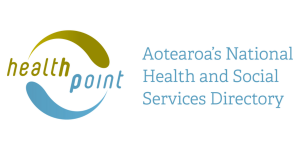Wishing everyone happy holidays and a joyful New Year from the Healthify team. Don't forget to Slip, Slop, Slap and Wrap!
Utrogestan for menopausal hormonal treatment
Sounds like 'U-trow-gest-an'
Key points about Utrogestan for menopausal hormonal treatment
- Utrogestan is a medicine used together with oestrogen, as menopausal hormone therapy, for people who still have a uterus (womb).
- Utrogestan contains the natural female hormone progesterone.
- Find out how to take it safely and possible side effects.

Utrogestan belongs to a group of medicines called progestogens and is used, together with oestrogen, as menopausal hormone therapy (MHT) for people who still have their uterus (womb).
As you approach menopause, changes or fluctuations in oestrogen levels can cause symptoms such as sweats or flushes, vaginal dryness, irritability and other mood changes, heart palpitations, 'brain fog' (poor memory or losing your words), skin changes and poor sleep. Read more about menopause.
- Menopause affects people in different ways and symptoms vary hugely in severity.
- You may have very little discomfort, or you may find that your symptoms interfere with your relationships and normal daily activities.
- If you have symptoms which are not relieved by lifestyle adjustments and self-care measures, your healthcare provider will discuss various treatment options with you, including MHT.
- MHT can help to relieve some of the symptoms of menopause and can make a big difference to the quality of life for many people. Read more about menopausal hormone therapy.
Utrogestan is used, together with oestrogen, in people who have a uterus (womb). If you still have your uterus, your MHT will include both oestrogen and progestogen because oestrogen alone can overstimulate the cells lining your uterus, causing an increased risk of cancer of the uterus lining. The progestogen in Utrogestan helps to prevent the thickening of the lining and therefore reduces the risk of cancer.
Is Utrogestan different to other progestogens?
Utrogestan is considered a body identical hormone therapy, because it has the same chemical structure as the natural female hormone progesterone. Evidence suggests that this formulation has fewer long-term side effects.
Factsheet: How to take Utrogestan

|
Utrogestan factsheet |
Utrogestan is available as capsules (100 mg). Always take Utrogestan exactly as your prescriber has told you. The pharmacy label on your medicine will tell you how much to take, how often to take it, and any special instructions. Here is some guidance.
If you haven't had a period for over a year
- Take 1 capsule each evening at bedtime.
If you have had a period within the last 12 months
- Take 2 capsules each evening at bedtime for 12 to 14 consecutive days every month. For example, from the 1st to the 12th or 14th of every month, as that is easy to remember. For the other days of the month don't take any Utrogestan and start again at the beginning of the next month.
- You may have bleeding (like a period) for a few days, after this time.
- The reason for taking 2 capsules a day for part of the month instead of 1 capsule every day, is that in the early stages of menopause you could get irregular bleeding on the lower dose. The higher dose for part of the month is more likely to give you a predictable light period rather than unexpected bleeding.
- Timing: Take Utrogestan capsules on an empty stomach. This means about 1 hour before or 2 hours after food. Utrogestan can make you drowsy, especially when you first start taking it, so it's best to take your dose at bedtime.
- Swallow the capsules whole with a glass of water: Don't crush or chew them.
- Missed dose: If you forget to take your dose, take it as soon as you remember. But if it's nearly time for your next dose, just take it at the right time. Don't take double the dose.
- Note: Utrogestan can affect your concentration, so avoid driving and doing other tasks where you need to be alert until you know how this medicine affects you.
Every person is different and the length of time you will have menopausal symptoms is unknown. When you first start MHT, it’s important to have regular check-ups with your prescriber to assess whether ongoing MHT is right for you. However, once you are settled on a suitable dose for you, you'll need less frequent check-ups (once every year). You'll need to keep taking Utrogestan for as long as you are using oestrogen. It’s important to have regular check-ups to assess whether it's right for you to keep taking Utrogestan.
Most people stop taking it after a few years, when their symptoms resolve. It's usually best to reduce menopausal hormone therapy gradually rather than stopping it suddenly. This may reduce the risk of menopause symptoms returning.
Some people choose to take MHT for much longer, for example if they have low bone density or find their symptoms return when they stop it. This decision is for each person to make for themselves, discussing the risks and benefits, with their healthcare provider.
Here are some things to know when you're taking Utrogestan. Other things may be important as well, so ask your healthcare provider what you should know about.
- Taking other medicines: Utrogestan can interact with some other medicines and herbal supplements, so check with your doctor or pharmacist before starting Utrogestan and any new products.
- If you're having an operation or dental treatment, tell your healthcare provider that you're taking MHT.
Utrogestan is not a contraceptive
Utrogestan doesn't prevent you from getting pregnant. Although fertility falls during perimenopause, you're not fully protected from pregnancy until you've reached menopause, which means 12 straight (consecutive) months without a period if you are over 50 years of age, and 24 straight months if you are under 50. Even if you have a few months without a period, you can still get pregnant. You will need to use an appropriate method of birth control until menopause is confirmed.
Utrogestan is not suitable for everyone. You shouldn't use Utrogestan if:
- you've had severe liver problems
- you've had bleeding in your brain
- you have any unexplained vaginal bleeding
- you've had breast cancer or any lumps in your breast
- during a pregnancy you've had problems such as severe itching and blistering of your skin, yellowing of your skin or the whites of your eyes (jaundice), or any involuntary jerky movements
- you have a rare inherited blood disorder known as porphyria.
If you have a history of depression, or migraine let your healthcare provider know.
If you have an allergy to soya, don't use Utrogestan as the tablets contain soya lecithin. If you have an allergy to peanuts, use Utrogestan with caution. Although Utrogestan doesn't contain peanut oils there's the risk of a cross reaction and a few people with peanut allergy may also be allergic to soya.
Like all medicines, Utrogestan can cause side effects, although not everyone gets them. Often side effects improve as your body gets used to the new medicine.
Risk of blood clots
- The risk of blood clots increases with increasing age, increased body weight, smoking, and with illnesses including cancer and some autoimmune diseases.
- The risk of blood clots with body identical progestogen such as Utrogestan is minimal or none.
- However, Utrogestan is used in combination with oestrogen:
- oestrogen patches and gel have minimal or no risk of blood clots.
- when using oestrogen tablets the risk doubles, but it's still very low (1 extra blood clot per 1,000 women).
If you're worried about the risk of blood clots, talk to your doctor. If you get symptoms of a blood clot such as chest pain, shortness of breath, calf pain or swelling in one leg or arm, seek medical advice immediately.
Other side effects
| Side effects | What should I do? |
|---|---|
|
|
|
|
|
|
|
|
|
|
|
|
|
Read more about medicines and side effects and reporting a reaction you think might be a side effect.
Utrogestan(external link) Medsafe Consumer Information Sheet, NZ
Brochures
5 questions to ask about your medications(external link) Health Quality and Safety Commission, NZ, 2019 English(external link), te reo Māori(external link)
Utrogestan factsheet Healthify He Puna Waiora, NZ, 2023 English [PDF, 337 KB], te reo Māori, Samoan, Tongan
Medicines and side effects [PDF, 91 KB] Healthify He Puna Waiora, NZ, 2024
References
- Progesterone(external link) NZ Formulary, NZ
- Utrogestan (external link)Medsafe Datasheet, NZ
- Menopausal hormone therapy – where are we now?(external link) BPAC, NZ, 2019
- Bioidentical hormone therapy(external link) Australasian Menopause Society
- Soya-based excipients – a problem for people with peanut allergy?(external link) Medsafe, NZ, 2016
- Venous thrombosis/thromboembolism risk and menopausal treatments(external link) Australasian Menopause Society
Brochures

Utrogestan factsheet
Healthify He Puna Waiora, NZ, 2023
English, te reo Māori, Samoan, Tongan

Medicines and side effects
Healthify He Puna Waiora, NZ, 2024

Health Quality and Safety Commission, NZ, 2019 English, te reo Māori
Credits: Sandra Ponen, Pharmacist, Healthify He Puna Waiora. Healthify is brought to you by Health Navigator Charitable Trust.
Reviewed by: Dr Alison Payne, Specialist General Practitioner, Martinborough; Angela Lambie, Pharmacist, Auckland
Last reviewed:





